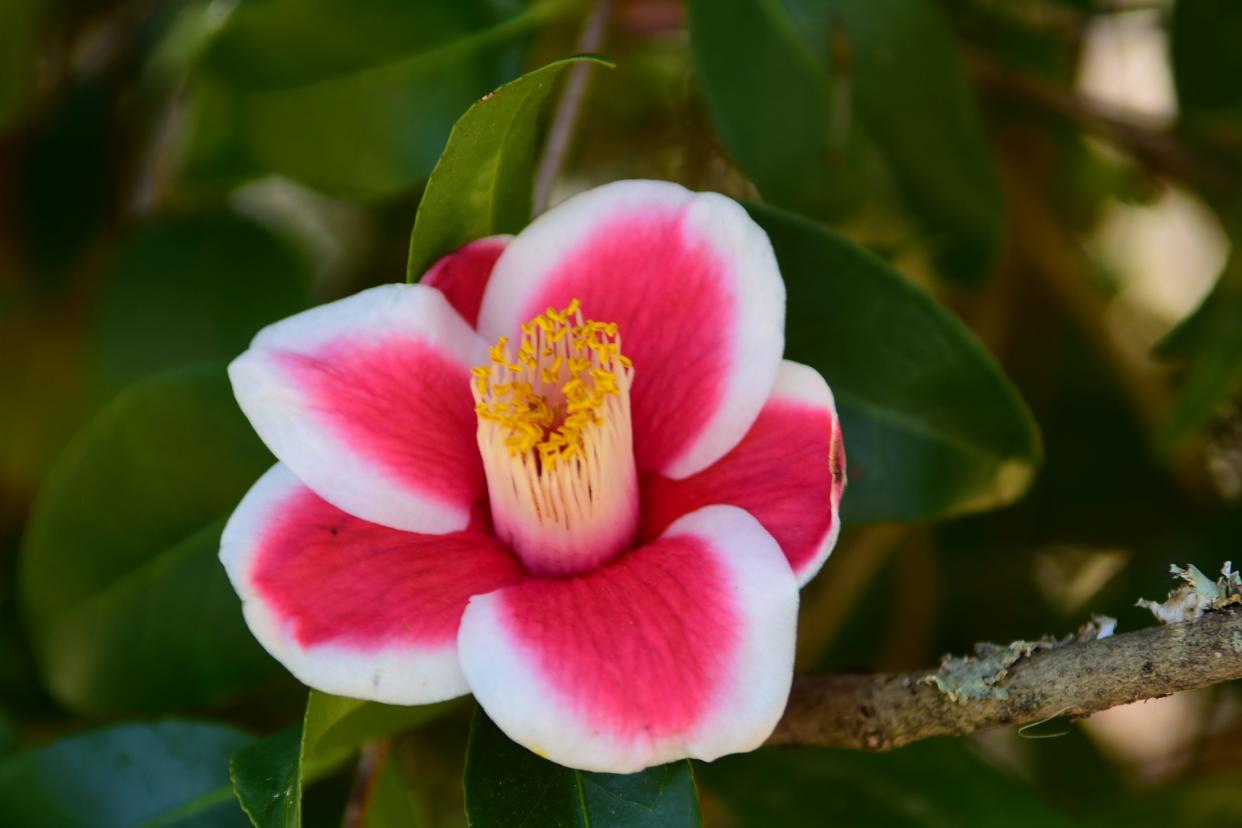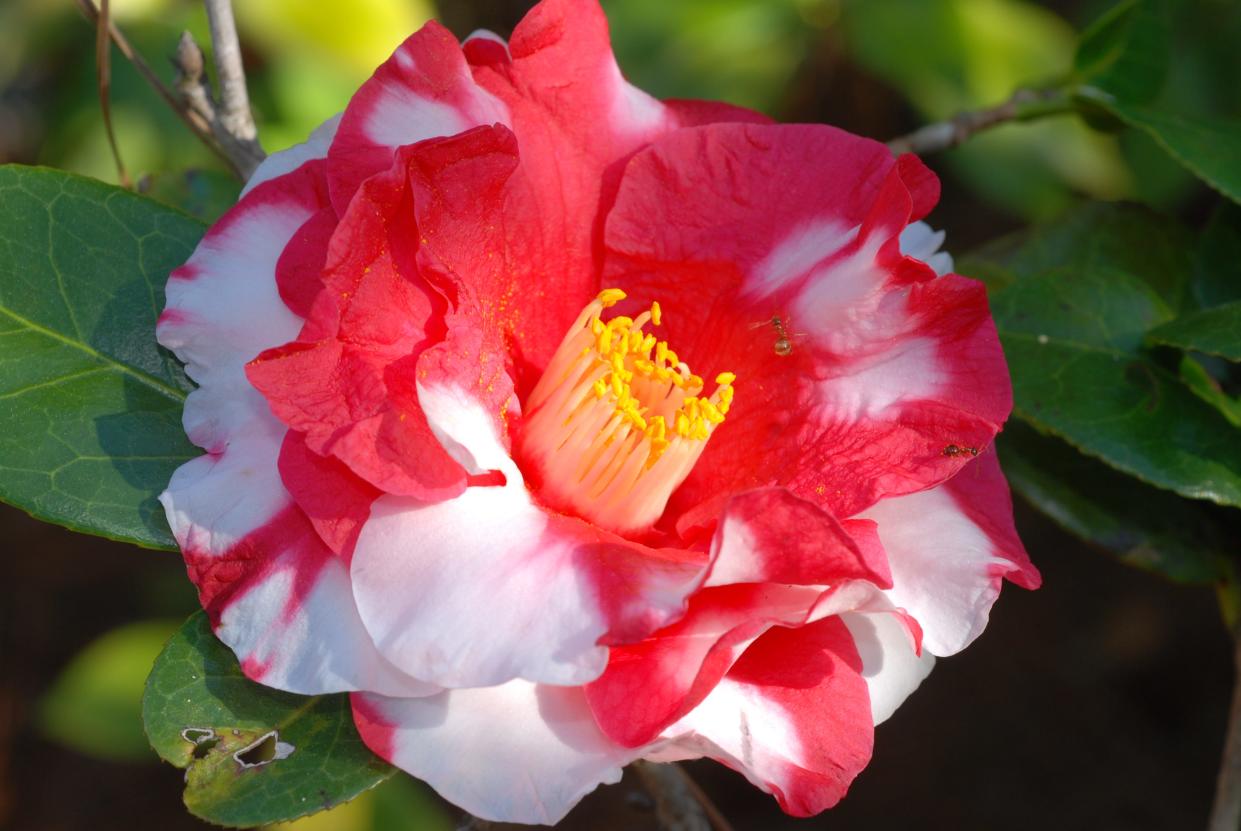Camellias: The jewel of the garden | Gardening
Camellias are a popular plant that shine in the winter and are said to be the “sophistic of the plant world”. These evergreen shrubs, with their glossy, dark green leaves are a staple in many Southern gardens and are ranked as one of the best flowering shrubs. This time of year, they produce red, pink or white blooms and they can be a solid color, stripes or combinations in-between.
There are many different types of Camellias but I will focus on Camellia japonica, the one most people think of when the word Camellia is mentioned. These lovely shrubs have exquisite blooms that can have different shapes. Some look like roses while others look like anemones or peonies. The blooms can be single, semi-double, double, formal double, or a full peony form.
Camellias are long lived plants. I saw one in China years ago that they claimed was over 900 years old. Some say they are slow to get established but I have found that if you plant them in the ideal spot, and give them water while they are getting established, they will establish themselves quicker.

For years, this has been known as a southern plant but because of the work of two men, Clifford Parks and William Ackerman, Camellias can be grown much farther north today. These two men spent years developing camellias that will grow in USDA zone 6.
Camellias are quite a versatile plant. They are grown as hedges, espaliered on walls, and used as specimen plants in the garden. They look lovely in a formal garden, and glow in a woodland setting. You can find varieties that will grow quite tall over time and others that are shorter. There are ones that have a very columnar shape that will fit nicely into a smaller space and there are others that do not grow more than three feet in height.
Camellias have exquisite blooms that decorate the bushes in a time when few other plants are in flowers. Debutant and October Affair are the first to bloom in my garden, showing off their flowers before Thanksgiving. Others follow along after Christmas and signal that spring is coming soon. Some blooms are small and some can be quite large, 4 inches or more. A freeze will damage the opened flowers, while the unopened buds will bounce back and open to their full glory.
Different varieties bloom different ways. Some plants flower all at once giving a profusion of blooms and there are others that bloom over a longer period of time with less of a dramatic show. They can bloom early, mid, or late season between November to April.

In planting camellias, it helps if they are placed out of the cold ,winter winds in a more protected area. They prefer dappled shade or morning sun and afternoon shade. If they receive too much sun, their leaves will scorch. It is best to dig a large hole, three to four times wider than the root ball, but not deeper than the root ball. If you dig a deeper hole the plant will settle over time and the plant will become too deep.
They prefer well-drained soils that are high in organic matter and slightly acidic (pH 5.5 to 6.5) and will not grow on limestone. They also like to be fed when the new growth starts in the spring after the flowers have faded. They are best fed with an acid-forming camellia/azalea fertilizer, once in the spring and you can fertilize them again in mid-summer, but do not fertilize the plant after early August because the plants need about two months to shut down before cold weather comes. This is particularly important in cooler climates. If you fertilize too late, the new growth that forms will not have time to harden before cold weather comes. This could damage your plant or even kill it.
Deer are not a problem with camellias; deer shun the thick leaves and are not on the animal’s list of preferred foods. I live in the country and I deer do not bother mine.
Camellias can benefit from a little pruning every few years to stimulate new growth. Just a little shaping from time to time will keep the plant healthy and looking its best. o this immediately after the flowers fade and before new growth starts to form.
Your local garden centers can help you find just the right camellia for you. As I mentioned earlier there are varieties that have been developed in recent years that will take colder weather than the older varieties that have been growing in the Deep South. These new varieties are worth finding if you are not in the warmer part zone 7. I live at the foothills of the mountains and some of the older varieties do not bloom well for me. I would love to grow ‘Frank Houser’, ‘Miss Aiken’, and ‘Showtime’ but I am a little too cold for these. I also have to make sure that I plant more cold-hardy ones in a more protected place.
Camellias are a jewel in the garden and if they like their location, they will live a long time, out living you. Camellias are truly the jewel of the winter garden and Queen of winter flowers. Betty Montgomery is a master gardener and author of “Hydrangeas: How To Grow, Cultivate & Enjoy,” and “A Four-Season Southern Garden.” She can be reached at bmontgomery40@gmail.com.

This article originally appeared on The Fayetteville Observer: Camellias rank as one of the best flowering shrubs.
